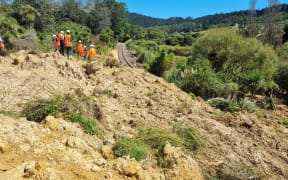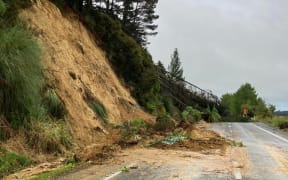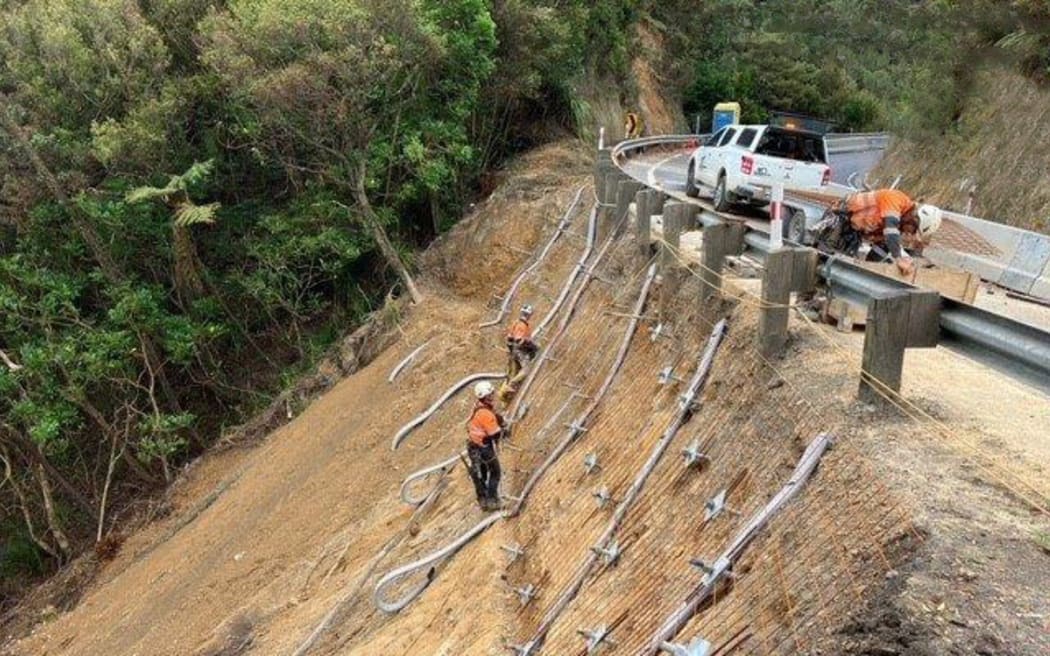
Repairing SH1 over the Brynderwyns in Northland. Photo: LDR / Northern Advocate / Waka Kotahi
Northland is facing an early Cyclone Gabrielle damage bill of more than $70 million - with major increases expected on that amount as more definite figures emerge.
Re-establishing the main roading access point to Northland remains one of the biggest challenges. Repairs to State Highway 1 over the Brynderwyns have so far taken 12,000 hours.
Whangārei Mayor Vince Cocurullo has already told the government almost $120m in its money needed to be spent on making increasingly damaged adjacent ratepayer-funded district roads being used for diverted Brynderwyns SH1 traffic suitable for that purpose.
Urgent cyclone repair was needed as its closure - including when partially opened for one lane travel only - was costing Northland $1m a day - meaning an already $38m hit to the region's economy and counting.
Initial roading damage assessments show at least $50m in Cyclone Gabrielle impacts across Northland's local ratepayer-funded council roads - Kaipara and Whangārei $20m apiece, with $10m in the Far North.
"And those assessments are only based on the Band-Aid approach, they're definitely not the gold-plated local roads' damage fix," Cocurullo said.

Roading assessments for repairs are for basic measures, not gold-plated fixes, Vince Cocurullo says. Photo: Northern Advocate / Michael Cunningham
Waka Kotahi regional manager maintenance and operations Jacqui Hori-Hoult said Northland had never had such a widespread weather event roading closure of the type created via Cyclone Gabrielle.
The government agency has already spent more than $1.6m on the Brynderwyns SH1 damage - with no confirmed final cost for this job yet available, or timeframe for the provision of this figure.
Northland Civil Defence Emergency Management Group chair Kelly Stratford said the cyclone's impacts were ongoing.
"This event is not over and it will take years to fully build back. However, the [response and recovery] work that has been done in a very short period of time is incredible," Stratford said.
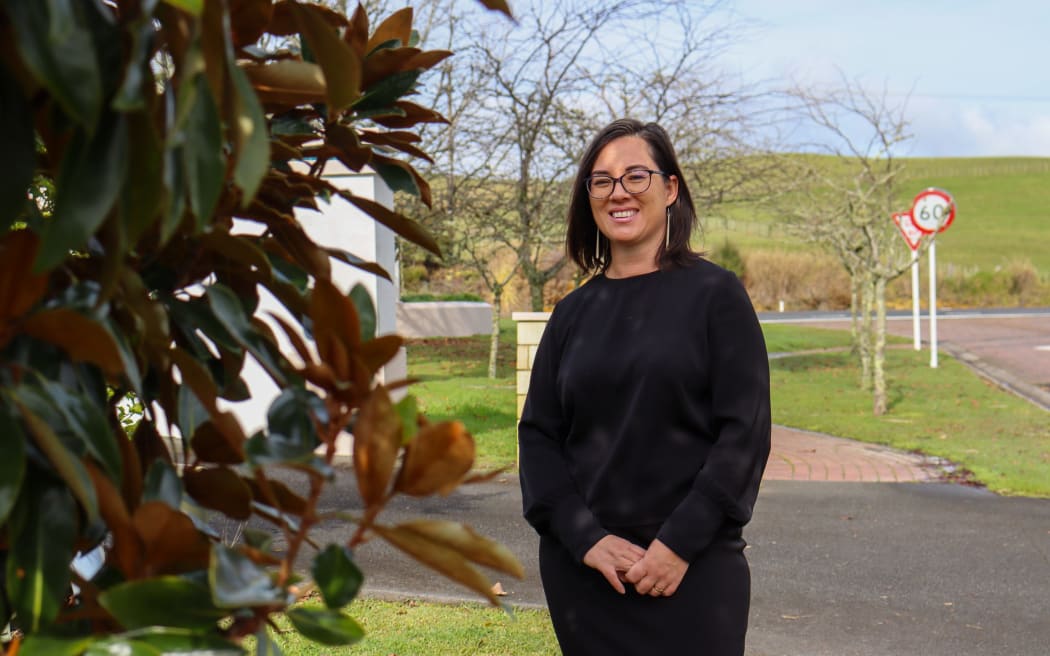
Northland Civil Defence Group chair Kelly Stratford, who is also FNDC deputy mayor. Photo: LDR / Northern Advocate
Northland Federated Farmers president Colin Hannah said "many millions of dollars" of damage and production loss across the region could be added to the region's cyclone's bill.
"There's more than a million dollars of damage and lost production in the Hikurangi Swamp alone," Hannah said.
Some Northland rural producers would be going to the wall as a result of the cyclone.
At the cyclone's height, two-thirds of all Northland households - 46,000 of them - were without power. There were also 450 local roads impacted with 183 of those closed at some point.
More than half the region's 153 schools were damaged to varying degrees, with impacts concentrated around Whangārei and south as well as Kaipara.
Ministry of Education head of property Sam Fowler said his organisation was still working towards a final regional damage cost figure.
Northland has 16 red-stickered houses (Kaipara 10, Whangārei five and Far North one). There are 26 yellow-stickered houses (Kaipara eight and Whangārei 18) and 19 white-stickered houses, all in Whangārei district.
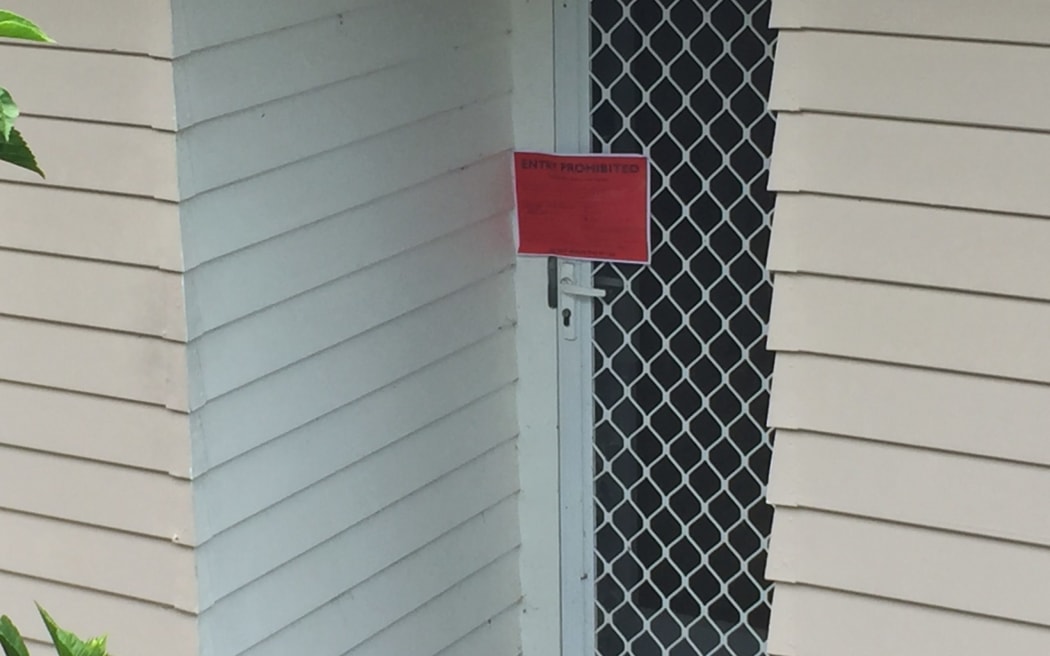
Northland has 16 red-stickered houses at present. Photo: LDR / Susan Botting
Speaking as Northland Mayoral Forum chair, Cocurullo said Cyclone Gabrielle highlighted the importance of the North's climate adaptation work.
"More frequent flooding, droughts and coastal erosion are already a reality, posing serious risks to people, property, roading access, biodiversity and ecosystems" he said.
The inter-council, tangata whenua group Climate Adaptation Te Tai Tokerau had met on 20 February, acknowledging the need to move faster on Northland's climate adaptation work, he said.
Northland Regional Council (NRC)'s Cyclone Gabrielle regional rainfall distribution map shows from February 11 to Valentines Day, Whangārei had the biggest rainfall with 420mm, but heavy rain was spread throughout the lower part of the North.
In a 72-hour hour period over this time, as much as 340mm of rain fell across Kaipara, compared with the average summer figure over the same time of 120mm.
Heavy rains in the Whangārei district upper reaches of Kaipara Harbour's catchment added to this with major flow increases downstream into the Northern Wairoa River threatening Dargaville and surrounds a couple of days later.

Northland's Cyclone Gabrielle rainfall distribution. Photo: Northland Regional Council
Kaihu River flooded and the Awakino River also burst its banks with people being rescued in the darkness before the dawn. Silver Fern Farms' Dargaville meatworks flooded as did the town's wastewater treatment plant's ponds and pump station.
Northland Inc chief executive Paul Linton said there had been strong interest in Northland's $1.7m Civil Defence business funding with more than 670 funding applications in the first week after the cyclone.
Cyclone Gabrielle had highlighted the North's already-existing roading, communications and rail networks' infrastructure deficit, Linton said.

Local Democracy Reporting is Public Interest Journalism funded through NZ On Air

